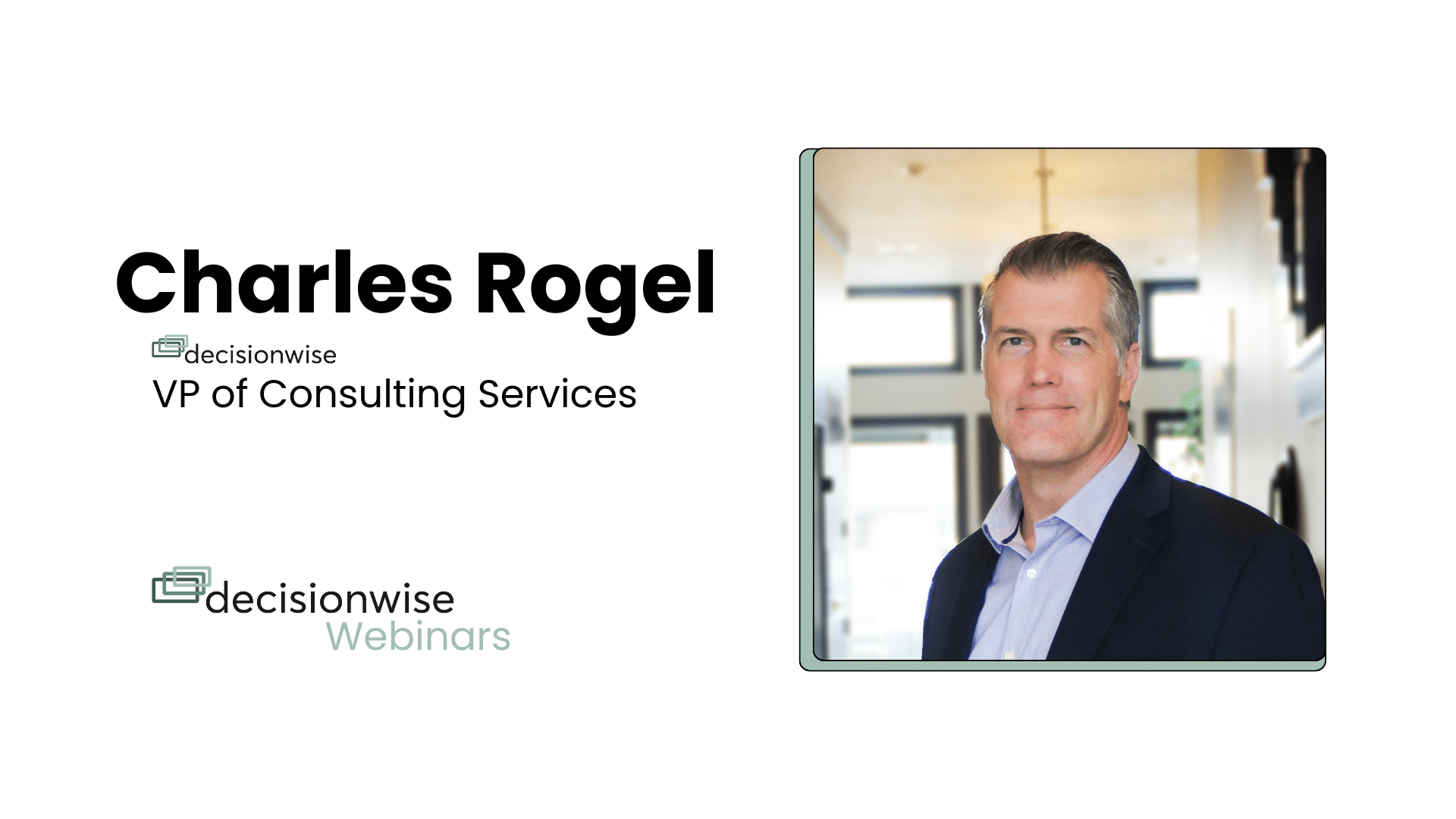In 1976, the band Boston released their iconic song “More Than a Feeling.” Lead singer Tom Scholz drew inspiration from his memories of growing up near Boston, where radio songs evoked powerful emotions. In our work here at DecisionWise, we know that employee engagement is much more than a feeling; it is all about doing, contributing, and creating. Employee engagement is a multifaceted concept that goes beyond the typical feelings of job satisfaction or happiness.
Employee engagement represents a deep emotional commitment to an organization and its goals. In this article, we explore various definitions of employee engagement and shed light on why employee engagement matters to organizations, leaders, and employees.
Overview
At its core, employee engagement is more than contentment or satisfaction at work. It encompasses a sense of purpose, commitment, and alignment with the organization’s mission. Engagement is about energy and the desire to give exceptional (and often discretionary) effort to one’s professional assignments.
Let us consider some key aspects of employee engagement:
- Emotional Commitment: Engaged employees invest their hearts, spirits, minds, and hands in their work. They do not merely clock in and out; they actively contribute to the organization’s success. This emotional commitment drives them to go the extra mile, even when faced with challenges.
- Beyond Satisfaction: While job satisfaction is essential, engagement extends beyond it. Satisfied employees may be content with their roles, but engaged employees are enthusiastic about their work. They find meaning in what they do and believe in the organization’s purpose.
- Behavioral Indicators: Engagement manifests itself through behaviors such as proactive problem-solving, collaboration, and a willingness to learn and grow. It is not just about being present; it is about actively participating and contributing.
Some Misconceptions about Employee Engagement
Before we explore different definitions of engagement, let us address a few misconceptions surrounding employee engagement. First, all positivity is not engagement. Second, negative behaviors are not always disengagement. Consider the following:
- Smiling at Work: While a smile can create a positive atmosphere, it alone does not guarantee engagement. An employee might smile out of politeness or habit, but true engagement goes beyond surface-level expressions. It involves emotional investment, alignment with organizational goals, and a sense of purpose.
- Politeness: Being polite is essential to a civil workplace, but it does not necessarily indicate engagement. Politeness can be a social norm, but genuine engagement requires active participation, enthusiasm, and commitment to one’s role.
- Frustration: An employee expressing frustration does not always mean disengagement. It could result from external factors (e.g., workload, deadlines) rather than a lack of commitment. Context matters—temporary frustration does not equate to overall disengagement.
- Disagreement: Disagreements can arise even among engaged employees. Healthy debates and diverse perspectives contribute to growth. However, persistent negativity or constant opposition without constructive intent may signal disengagement.
So, how can you tell if someone is engaged? It is about recognizing context and looking for performance.
- Individual Differences: Engagement varies based on personality, work style, and personal circumstances. Remember that introverts may show engagement differently from extroverts.
- Organizational Culture: A positive work environment fosters engagement. Organizations that value employee well-being, growth opportunities, and open communication tend to have more engaged teams.
- Job Fit: An employee’s role alignment with their skills, interests, and values impacts engagement. A mismatch can lead to disengagement.
Different Definitions of Employee Engagement
Now, let us examine some different definitions of employee engagement:
- Employee engagement refers to the degree workers feel invested in, motivated by and passionate about their jobs and the company for which they work.
- Employee engagement is a concept in human resources that refers to the degree to which employees are invested in, motivated by and passionate about the work they do and the company for which they work.
- Employee engagement is a key indicator of a healthy and thriving workplace, where employees feel valued, involved, and connected to their roles and the company at large.
- Employee engagement is a human resources (HR) concept that describes the level of enthusiasm and dedication a worker feels toward their job. Engaged employees care about their work and about the performance of the company and feel that their efforts make a difference.
DecisionWise’s Definition:
Employee engagement is an emotional state where employees feel passionate, energetic, and committed to their work. Engaged employees invest their best selves — their hearts, spirits, minds, and hands — in the work they do. They go beyond the minimum, contributing discretionary effort.
This definition emphasizes the holistic nature of engagement and implies a comprehensive involvement that goes beyond just emotional or mental commitment. Engagement is about taking action and doing. Comparatively, the other definitions focus more on feelings.
For example, the first and second definitions focus on the degree to which employees feel invested, motivated, and passionate about their jobs and the company. The third definition highlights engagement as an indicator of a healthy workplace, emphasizing the feelings of value, involvement, and connection to the company. The fourth definition describes engagement as a level of enthusiasm and dedication a worker feels towards their job. DecisionWise’s perspective differs from the others by emphasizing a more holistic and comprehensive form of engagement, involving emotional, mental, and the physical aspects of an employee’s investment in their work (actions and behaviors).
Why Engagement Matters
Employee engagement is not a fleeting emotion; it is a sustained commitment. Here is why it matters:
- Productivity: Engaged employees are more productive. They willingly invest effort, leading to better outcomes for the organization.
- Retention: Organizations with high engagement levels retain their top talent. Engaged employees are less likely to seek other opportunities.
- Customer Satisfaction: Engaged employees provide better customer service. Their commitment reflects positively on the brand.
- Innovation: Engaged employees are more innovative. They contribute fresh ideas and drive continuous improvement.
Shared Responsibility
Employee engagement is a shared responsibility. While the organization creates an environment conducive to engagement through transparent communication, recognition, and opportunities for growth, employees also play a crucial role. They have the autonomy to choose to engage, to immerse themselves in their roles, and to align their personal goals with the organization’s vision. This mutual commitment fosters a culture of engagement, driving productivity and satisfaction in the workplace. Thus, engagement is not a one-sided effort but a collaborative endeavor that requires active participation from both parties.
Tips for Leaders
Organizations and leaders invite employees to engage by creating a supportive culture and an engaging environment that is focused on meaning, autonomy, growth, impact, and connection (DecisionWise’s 5 Engagement MAGIC elements). Effective leaders also focus on:
- Leadership: Leaders set the tone. They need to communicate purpose, recognize achievements, and provide growth opportunities.
- Feedback: Regular feedback helps employees understand their impact. Constructive feedback fuels growth.
- Development: Invest in employee development. Learning and skill-building enhance engagement.
- Well-Being: Prioritize well-being—physical, mental, and emotional. A healthy workforce is an engaged workforce.
Conclusion
In conclusion, employee engagement is more than a feeling; it is a commitment that drives organizational success. By fostering a culture of appreciation and shared responsibility, organizations can unlock the full potential of their workforce. Remember, engagement is not a one-time achievement; it is an ongoing journey toward excellence.
DecisionWise Can Help You
It’s clear that the journey towards a more engaged workforce is ongoing and multifaceted. If you’re inspired to take the next step and elevate employee engagement within your organization, we invite you to reach out to our team at DecisionWise. Our experts are dedicated to partnering with you to craft a tailored strategy that resonates with your unique culture and goals with our advanced software platform: Spectiv. Together, we can create an environment where engagement thrives, and every team member feels valued and heard.




